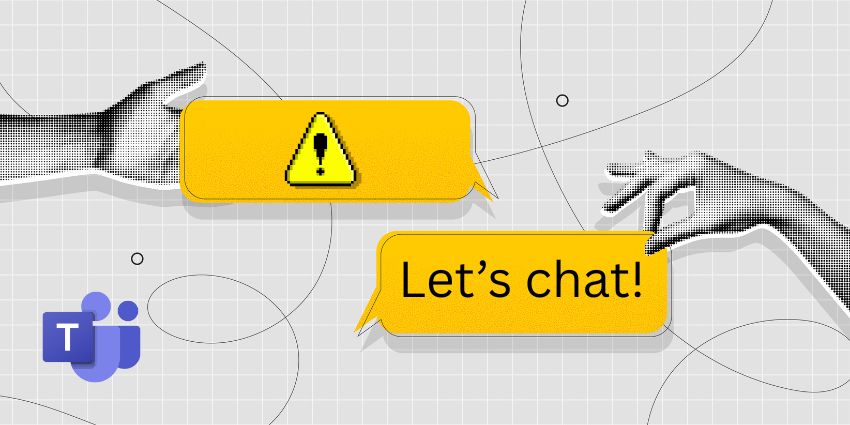Hybrid work isn’t new. But for most organizations, securing the workplace still feels like an awkward patch job: a mix of VPNs, firewalls, and confusing policies.
People aren’t just based in the office anymore. They’re working from home, airports, and local cafes. Meanwhile, apps are everywhere, some in the cloud, some still on-prem. The idea that there’s a single perimeter protection is outdated. That’s why interest in ZTNA for hybrid work is growing.
Zero-Trust Network Access doesn’t care where users are. It cares who they are, what device you’re on, what shape that device is in, and whether it makes sense for you to be accessing a resource right now. No assumptions.
The concept is catching on. Now, 81 percent of companies plan to adopt ZTNA by 2026. So, should your enterprise be following in their footsteps?
- Hybrid Work Security in Healthcare: Enabling HIPAA Complaint Remote Work
- Hybrid Work Security in Government: Protecting Public Services Without Compromising Agility
What is Zero-Trust Network Access?
Zero-trust network access means your ecosystem doesn’t trust anyone or anything until you’ve verified everything. That means you don’t check more than a password, you look at:
- The device: Is it patched? Encrypted? Company-issued?
- Context: Is this a normal time, location, and behavior?
- What they’re asking for, and only give them access to that.
You also don’t verify once at login and forget about it. You keep checking in real time because trust isn’t permanent. A device might be fine when it logs in, but it’s compromised 10 minutes later.
ZTNA gives you real-time access control. It’s surgical, not sweeping. It makes least privilege access actually enforceable, instead of just a good idea. This is why major firms, from global law offices to healthcare providers, are rolling it out across the board.
Understanding ZTNA for Hybrid Work
For companies trying to secure hybrid work, ZTNA changes how they think about access control completely. Identity isn’t based on a username or password alone. It’s based on whether a person has multi-factor authentication enabled, whether they’re using an expected device, and where they’re logging in from.
Devices need to prove themselves, too. A user might check out. But what about their laptop? Is it running the latest updates? Does it have disk encryption turned on? Is it jailbroken, rooted, or completely unknown to your endpoint management tool? With ZTNA, a sketchy device doesn’t get access, no matter who’s holding it.
Plus, with ZTNA for hybrid work, nobody gets the keys to the kingdom. This is where microsegmentation comes in. Even if you’re trusted, you only get access to the app or data you actually need. You can’t poke around the network. You can’t “see what else is in here.” ZTNA keeps the blast radius tight, and lateral movement is nearly impossible.
Why ZTNA Works So Well for Hybrid Work
Legacy security tools were built for an office-bound world. The minute people started working from everywhere, those tools started struggling.
ZTNA for hybrid work solves this by doing one simple thing extremely well: controlling access based on identity and context, not assumptions. But the real value shows up in how it simplifies life for IT, improves compliance, and keeps users moving without putting data at risk.
Greater Data Security
In hybrid environments, trust based on “who’s inside the network” doesn’t hold up. ZTNA for hybrid work replaces that with continuous verification: only authenticated users on compliant devices can request access, and only to apps or data they’re explicitly authorized for. That effectively shrinks the attack surface and stops lateral movement in its tracks.
DLUHC implemented Zscaler ZTNA and blocked 81 million policy violations in 90 days, while eliminating VPNs and firewalls across its global footprint. They segment apps for contractors, enforce least privilege access, and deliver a simple experience to all users.
Improved Endpoint Management
ZTNA doesn’t check the person and device. Patch levels, encryption status, antivirus, and enrollment status are all evaluated before granting access. Access can be revoked immediately if the device falls out of compliance mid-session.
Barnes Group deployed Fortinet Universal ZTNA across 8,500 endpoints in 116 locations. They streamlined access policy management, cut audit prep time, strengthened worldwide endpoint hygiene, and slashed IT staff time spent on admin tasks.
Simplified Compliance
ZTNA gives you built‑in, granular logging: who accessed what, from where, with which device posture. That’s exactly what auditors, regulators, and C‑suite executives want, and it’s why zero trust is now a compliance requirement in many frameworks.
As part of its global cloud-first strategy, KPMG integrated Microsoft Defender for Cloud with ZTNA controls, accelerating compliance reporting across its international footprint and reducing response windows when issues arose.
Better Support for Remote Work
With ZTNA, hybrid doesn’t mean friction. Users can connect from anywhere and still get secure, seamless access to what they need. There’s no VPN slowdown or backhauling traffic. Access is identity-based, device-aware, and application-specific.
BorgWarner, working with Zscaler, eliminated 90+ firewalls, and blocked over 66.8 million policy violations by switching to ZTNA for hybrid work. The best results though? Accelerated adoption of cloud-based technologies, and increased simplicity for contractors and remote staff.
Getting Started with ZTNA for Hybrid Work
You don’t have to rip out your entire infrastructure to adopt Zero Trust. In fact, most organizations start small, then scale once they see it working. Here’s how most teams begin:
- Step 1: Start with identity: Zero-trust network access cannot be achieved without strong identity controls. That means MFA everywhere, conditional access policies, and a central identity provider like Azure AD, Okta, or Ping. If identity isn’t nailed down, ZTNA has nothing to work with.
- Step 2: Define your crown jewels: Don’t try to protect everything all at once. Pick 2–3 critical apps or services, say, your finance system or HR platform, and put ZTNA in front of them. Lock down access based on least privilege access model principles: only the right people, at the right time, from compliant devices.
- Step 3: Roll out in layers: ZTNA doesn’t have to replace your VPN overnight. Start with a pilot group, such as remote staff or third-party contractors. Get the policies right. Tune the alerts. Then expand.
- Step 4: Don’t go it alone: Vendors like Zscaler, Microsoft, and Fortinet all offer secure remote access zero trust solutions with built-in integrations for cloud apps, device management, and identity providers. Many also partner with MSPs who can help manage rollouts and policy design.
- Step 5: Make it real-time: The final step? Turn on real-time access control. Not just “you’re in” or “you’re out” but “you’re in because everything checks out right now.” That’s what makes ZTNA dynamic.
Where ZTNA for Hybrid Work is Headed
The current model of ZTNA for hybrid work is strong, but it’s just the beginning. What’s coming next will reshape how enterprises secure every layer of work and infrastructure. Major trends right now include:
- ZTNA + SASE convergence: The days of juggling six security dashboards are numbered. Forward-looking IT leaders are collapsing access and networking into one stack, and that’s where ZTNA meets SASE (Secure Access Service Edge).
- AI and ML-powered policy engines: Increasingly, real-time access control will be driven by behavior modeling and continuous risk scoring. ZTNA is evolving to watch for unusual patterns, like a user logging in from a new country and accessing files they never touch at a strange hour. With AI, those patterns trigger automated policy changes or lockdowns.
- Securing edge and IoT: As companies push compute to the edge and IoT devices multiply, ZTNA for hybrid work is about more than people. Printers, sensors, smart cameras, they all need access controls too. Expect ZTNA frameworks to expand and cover these “non-human” endpoints, with granular policies and visibility baked in.
- Managed ZTNA-as-a-Service: Not every team has the resources to build and run ZTNA in-house. That’s why vendors now offer managed ZTNA tailored for regulated sectors like healthcare, legal, and government. You get policy enforcement, alerts, support, and reporting without standing up infrastructure yourself.
ZTNA is moving fast, but it’s moving in the right direction: toward simplicity, visibility, and security that adapts to people’s work.
Embracing the Future of Zero Trust Access
ZTNA for hybrid work is a direct response to the hybrid reality every enterprise now faces. Legacy access tools can’t handle today’s perimeterless, multi-device, AI-infused work models.
ZTNA replaces assumptions with real-time verification. It reduces breach risk, supports compliance audits, and makes secure access feel invisible to users. If you’re rethinking your approach to hybrid work security right now, check out our complete guide to securing the modern workplace.
Alternatively, explore the security and compliance vendors baking ZTNA, SASE, and intelligent processes into their toolkits and platforms.







